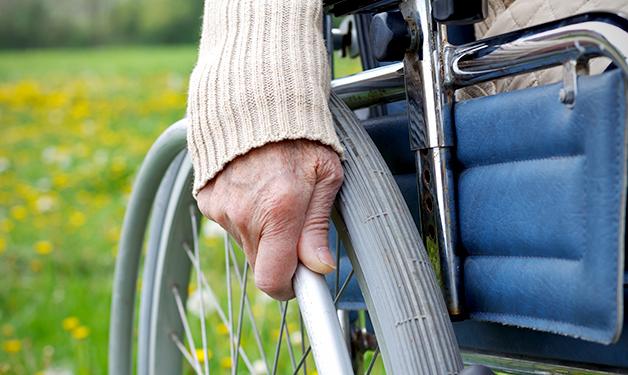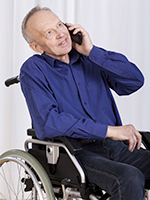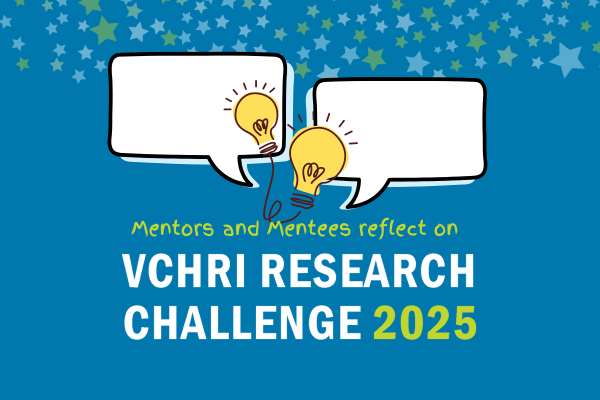
MOvIT project creates opportunity for much-needed follow up with wheelchair users.
Prescribing a wheelchair – a life-altering piece of health equipment – to a patient without follow-up to check comfort and proper use happens far too often and is a disservice to society, says Vancouver Coastal Health Research Institute scientist Dr. Bill Miller.

“Clinically, we’re seeing that people aren’t following up to evaluate their wheelchair experience, and that’s a big issue because we don’t know if we’re meeting the client’s or stakeholders’ needs or if they’re actually running into problems in the long term,” says Dr. Miller, who is also a professor in the Department of Occupational Science and Occupational Therapy and associate dean of health professions in the Faculty of Medicine at the University of British Columbia. “And wheelchairs are a substantial investment as costs can range from an estimated $800, on the low end, to as high as $40,000 for power wheelchair.”
“Unfortunately, many new wheelchair users are being prescribed a wheelchair, then they get a bit of training on how to use it, and that’s it,” says Dr. Miller.
Dr. Miller and his colleagues sought to discover a novel way to stay in touch with new wheelchair users and share information without overloading already busy clinicians and the health care system. Led by Dr. Claudine Auger, assistant professor in the School of Rehabilitation at the Université de Montréal, and building on her post-doctoral work, the researchers developed the Mobility Outcomes via Information Technologies (MOvIT) project. MOvIT examined the feasibility of automated calls for the systematic monitoring for adverse outcomes associated with wheelchair use, particularly among older adults between the ages of 50 and 84.
Automated phone calls were selected as the best form of monitoring and follow-up because of relatively low costs and greater accessibility.
“Having a clerk to follow up with somebody requires substantial human investment and funds,” explains Dr. Miller. “Also, people with disabilities in many cases can’t afford internet access and are older, which makes online technology less accessible to them.”
Details about the MOvIT project, its development, and feasibility, were published in BMC Health Services Research in September 2015.
Phase I of the researchers’ two-phase mixed methods project approach involved user-centered development and face validation of a monitoring questionnaire with end-users (i.e. seven wheelchair users and five healthcare providers). Phase II tested the feasibility of monitoring outcomes using automated calls to administer the MOvIT questionnaire one and three months after wheelchair delivery. When problems were identified, the computer monitoring system notified a clinical coordinator who followed up with respondents requiring interventions. Feasibility data were extracted from the web database and from individual interviews covering perceived ease of use, usefulness, and intention to use the MOvIT questionnaire in the future.
The MOvIT monitoring questionnaire developed in Phase I tracked nine potential wheelchair-related adverse outcomes considered important for end-users: 1) non-use of wheelchair, 2) pain, 3) skin condition, 4) positioning, 5) wheelchair incidents, 6) psychosocial issues, 7) restricted wheelchair participation, 8) limited wheelchair skills and knowledge, and 9) technical problems.
“We really were trying to capture the number of problems and types of problems people had,” says Dr. Miller. “We talked to not only wheelchair users, but also clinicians who prescribe wheelchairs and we tried to identify the key areas that we need to check up on.”

Results from the project show that nearly 83 per cent of participants found the intervention useful and approximately 82 per cent said they intended to use the MOvIT monitoring questionnaire in the future.
“Well over 50 per cent of wheelchair users are older adults over 50 – that’s the critical mass of the population we’re dealing with,” says Dr. Miller. “And when you look at the traditional estimate that 25 per cent of our population will become elderly in the next 20 years, that presents a potentially pretty big burden on the system.”
Having shown that MOvIT monitoring is feasible, Dr. Miller and his colleagues hope to institute it in British Columbia's health services system. They are also currently working on MOvIT Plus, a new project funded by the Networks of Centres of Excellence Age Well grant, which monitors online, looks at all interventions (beyond wheelchairs), and focuses on caregivers.
“We’ve taken the next step to a larger content area and slightly bigger audience,” says Dr. Miller. “Under the guidance of Dr. Auger, we’re looking at caregivers, including family and friends on whom the burden of care often falls, because they are often neglected.”


